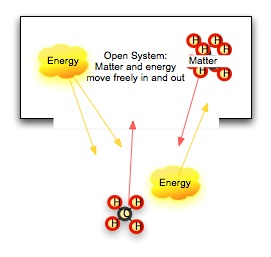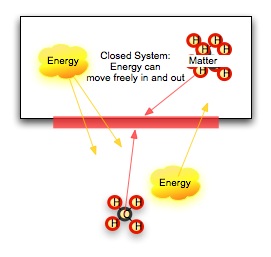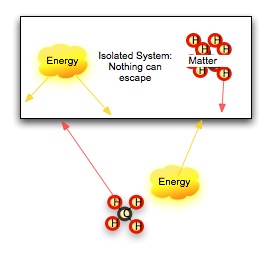
Physics
Chapter 7: 1-4

Web Lecture
Momentum
Introduction
Now we turn our attention to momentum, yet another quantity that depends on mass and velocity, but which particularly focuses on the concept of inertia, the tendency for objects to resist changes to their state of motion. The principles of conservation of energy and conservation of momentum allow us to analyze and explain phenomena that force considerations alone cannot fully explain.
When a particle of mass m is moving in a straight line under the action of an uniform force F, if V, v be the velocites at the beginning and end of the interval of time t, and s be the space described in that time, the following equations will hold:
m(v-V) = Ft
½m(v2 - V2) = Fs
These equations represent respectively that:
1. The increase of momentum in a given time is equal to the whole force which has acted in that time.
2. Half the increase of vis viva, or the increase of the kinetic energy in a given space is equal to the work of the force in that space.
Percival Frost, Commentary on Newton's Principia (1878)
Outline
Unlike scalar quantity energy, momentum is a vector. We have to take into account direction as well as magnitude in calculating changes to momentum.
Momentum
The concept of momentum grew out of the study of motion and a collision between the old Aristotelian ideas of motion with the new ones proposed by Newton and Descartes. In Aristotelian physics, things moved because they had some internal desire to be in a particular spot (earth moved toward the center of the universe, fire away from the center, for example). In Newtonian physics, things changed their state of motion only when acted on by an outside force. In separating the two concepts, the mechanistic physicists who came after Newton divided forces into different kinds.
Leibniz called the product of m*v vis mortua, or dead force, which measures the resistence of an inert body to change motion--that is, it measures the body's inertia. Descartes saw this product as a conserved quantity of motion, and realized that it lead directly to Newton's definition of force (see below). Leibniz defined mv2 as vis viva, living force, and Christiaan Huygens realized that this "force" is conserved in elastic collisions. Eventually Leibniz determined that his vis viva was not force at all, but another kind of quantifiable and conserved characteristic of matter in motion, which finally became the basis of our concept of kinetic energy. Momentum and energy were different independent and measurable quantities, and under certain circumstances, both were conserved.
We have already studied the definition of kinetic and potential energy. The concept of energy is in some ways a "bean-counter" concept. We observe distance, velocity, mass and acceleration directly. We can observe force indirectly by measuring acceleration, and we can see its effect in acceleration. Energy is somewhat different. We can determine the amount of kinetic energy in a moving system from the mass and velocity of the system, but the energy is a derivative of these factors. Unlike force which gives rise to acceleration, energy doesn't cause a change. It just is. We call such quantities "state" values. They change from one state of the system to another state of the system, but the change is independent of how the system changes.
Potential energy is also a state value, a measure based on an object's current position in a force field like gravity or electricity. We can calculate changes to it, but we cannot measure its absolute value. We can use the calculation to predict the motions that will result if the object is allowed to move freely in the field.
Despite its ellusive nature, the concept of energy is enormously powerful tool in analyzing any situation where objects change positions in a field, or move with any velocity.
Momentum is a similarly useful abstraction. In modern physics, momentum is defined by the formula p = m * v. Note that both p and v are vectors; they differ in magnitude but not in direction.
Newton's original formulation for F = ma was in terms of momentum: F = Δp/Δt. This gives us a different conceptual definition, where momentum becomes a measure of the rate of change in motion brought about by a force operating on an object. We can derive one format from the other:
Note that the second term contains the most general case, where both m and v may change. So far we have considered only situations where mass is constant, but there are many (such as our favorite liquid fueled rocket blasting toward space) which change mass as they change velocity, and we definitely need to pay attention to mass changes in relativistic sutionations.. For non-classical situations, we need to consider forces with the second formula rather than the first or last.
Systems and energy flow

|
We need to revisit our definition of "system". In an open system, matter and energy can freely cross the boundary. An open thermos and a cloud of gas in space are both examples of open systems. |

|
A closed system allows energy but not matter to cross the boundary. Strictly speaking, the earth is an open system, in which matter (in the form of atmospheric gases leaving and meteors entering) and energy (in the form of sunlight) cross the boundary between space and the planet, but for most intents, the earth is closed: the amount of matter crossing the boundary is negligible. A better example is a thermos with a cellophane or glass lid. Light energy and heat energy can cross the boundary, but matter cannot. |

|
In an isolated system, neither energy nor matter will cross the boundary. A thermos sealed with its heat-proof lid is an isolated system. Within an isolated system, the total amount of energy cannot change, although the form of energy may change, from potential to kinetic and back, from energy stored in a mass-based gravitational field to energy stored in a chemical bond to energy flowing in electrical current. (We'd need a very strong thermos to withstand an energy-to-mass conversion). |
We can extend our definitions of open, closed, and isolated to explain forces acting on or within the system. If the sum of F = 0, then all the changes in momentum equal zero. We consider any system in which all forces are internal to be an isolated system. In such a system, the sum of forces must be zero to conserve energy, and so the momemtum in such a system is also conserved:
Pinitial = Pfinal in all cases.
Impulse
Rearranging the momentum equation gives us a new conceptual quantity: F Δt = Δp, or the force acting through a period of time is the impulse, or change in momentum. (Conceptually, this is related to power, which is work expended during a given period of time). The concept of an impulse is useful for determining the transfer of energy when forces work on objects over short periods of time.
Collisions
Most studies in momentum consider the problems of collisions, of which there are two types. In an elastic collision, all participating objects retain their individual identities and integrity, after suffering a brief compression at the instant of collision. In an elastic collision, the total kinetic energy does not change. A good example is the collision of two billiard balls collide on a pool table.
In an inelastic collision, the total kinetic energy changes, and some kinetic energy is converted into potential energy, heat or other forms. A good example of an inelastic collision is the ballistics pendulum, which translates kinetic energy into potential energy.
The conservation of energy and the conservation of momemtum buy us some interesting possibilities for analyzing collision situations.
- KE1 = KE2 and p1 = p2 independently equate factors of mass and velocity. As any algebra student should know, you need at least as many independent equations as you have unknown variables in order to solve for the actual value of the variables. With the mv = p = m'v' conservation of momentum, we can frequently solve for one mass or one velocity in terms of the other, then substitute that value into the energy equations ½mv2 = ½m'v'2.
- Conservation of energy and conservation of momentum hold even if acceleration is changing. We can use these relationships and the relationship of Work = F • d = ma • d to determine values when the equations we learned in chapter 2, which are limited to constant acceleration, don't apply.
Study how Newton's cradle follows the rules of conservation of momentum.
Here is the My Physics Lab simulation. You can change the number of pendula, length, gravity, damping, and several other factors.
Practice with the Concepts
Discussion Points
- A person jumps from the tree to the ground. What happens to his momentum?
- Cars used to be as rigid as possible to withstand collisions. Newer cars have crumple zones. What is the advantage of the newer design?
© 2005 - 2025 This course is offered through Scholars Online, a non-profit organization supporting classical Christian education through online courses. Permission to copy course content (lessons and labs) for personal study is granted to students currently or formerly enrolled in the course through Scholars Online. Reproduction for any other purpose, without the express written consent of the author, is prohibited.